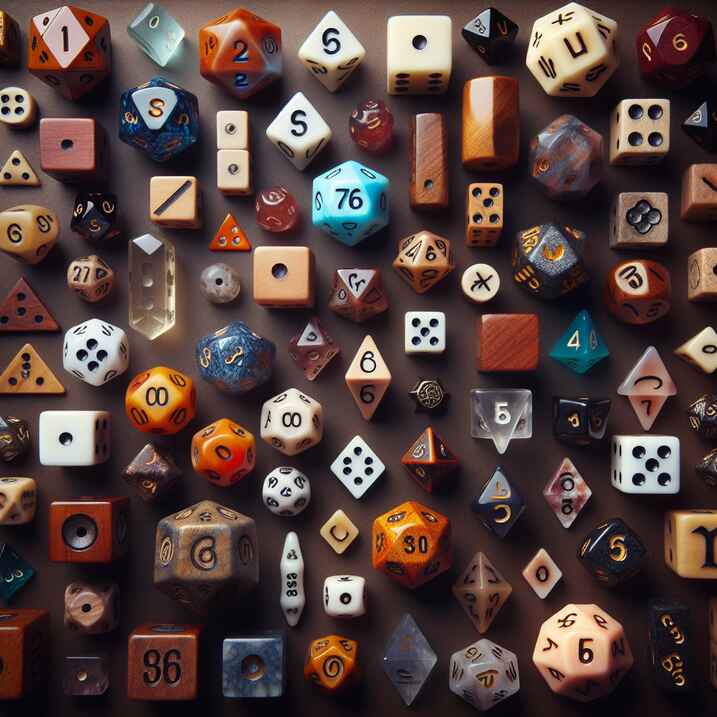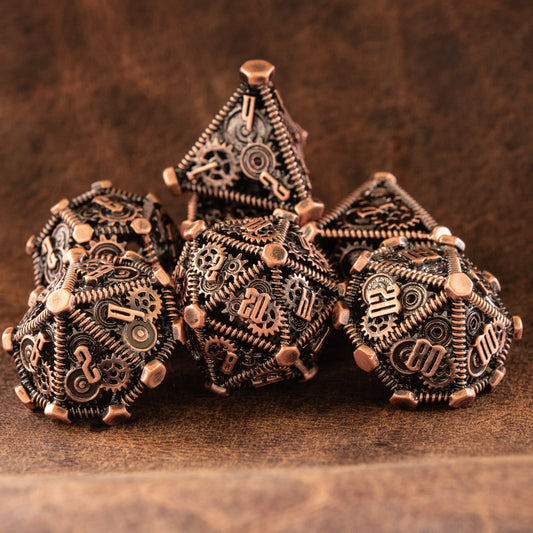
Are Dice Always the Same? Exploring the Intricacies of Dice in Tabletop Games
Share
Absolutely, let's delve into the fascinating world of dice in tabletop games, particularly their role in the beloved game of Dungeons & Dragons.
Introduction
In the realm of tabletop games, few elements hold as much mystique and allure as dice. These small, multifaceted objects are not just tools for determining outcomes; they are the arbiters of fate, the catalysts of chance, and the storytellers of endless adventures. But are dice always the same? This question opens a Pandora's box of inquiry into the nature of dice, their creation, and their role in the gaming universe. Let's explore the intricacies of dice, from their manufacturing to the science behind their rolls.
Understanding Dice: The Basics
Dice, in their simplest form, are small objects with multiple faces, each marked with a different number of pips or symbols. They are the quintessential random number generators in tabletop games. In Dungeons & Dragons, dice come in various shapes and sizes, known collectively as polyhedral dice. The most common types include:
- Six-sided dice (d6): The ubiquitous cube, used in countless games.
- Four-sided dice (d4): A pyramid-shaped die, often used for smaller increments.
- Eight-sided dice (d8), Ten-sided dice (d10), Twelve-sided dice (d12), and Twenty-sided dice (d20): Each adding different dimensions of randomness and probability to gameplay.
These dice are instrumental in determining the outcomes of battles, the success of spells, and the unfolding of narratives.
Are All Dice Created Equal?
The creation of dice is an art and a science. While they may appear identical, the manufacturing process can introduce subtle variations affecting their balance and fairness. Dice are typically made from materials like plastic, metal, or even gemstone, each with its own properties that can influence the roll.
- Balance and Fairness: Ideally, a fair die should have an equal chance of landing on any face. However, imperfections such as air bubbles, uneven weight distribution, or flawed edges can skew results. These imperfections, often imperceivable, can lead to debates about the fairness of dice in competitive settings.
Dice Layouts and Patterns
The arrangement of numbers on a die's faces, known as the die's layout, is critical to its function. Traditional six-sided dice follow a specific pattern where opposite faces add up to seven. This layout is designed to distribute weight evenly and maintain balance. However, the significance extends beyond mere balance; it influences the probability and randomness of outcomes.
- Mathematical Implications: The layout ensures that, over many rolls, each number has an equal probability of appearing. This symmetry is crucial for maintaining the integrity of games where dice determine outcomes.
The Science Behind Dice Rolls
Dice rolls may seem purely random, but several factors can influence the result:
- Friction: The surface on which a die lands can affect its roll. A rough surface may slow the die down, while a smooth one allows it to roll further.
- Initial Position and Throw Force: The angle and force with which a die is thrown play a significant role in determining the final result. A skilled player might even use these factors to influence outcomes subtly.
The concept of randomness is central to dice rolls, intertwining with probability to create the uncertainty that makes tabletop games thrilling.
Engage with the World of Dice
As we delve deeper into the world of dice, we uncover the layers of complexity that make them so captivating. From the meticulous process of their creation to the subtle science influencing their rolls, dice are far from being mere instruments of chance. They are pivotal to the storytelling and strategy that define tabletop games like Dungeons & Dragons. As you roll the dice, remember that each throw is a dance of chance and skill, a testament to the intricate world of gaming. Certainly! As an authoritative expert on Dungeons & Dragons (D&D), I can provide insights into various aspects of the game, from its intricate rules and mechanics to the rich lore and storytelling elements that captivate players worldwide. Whether you're a seasoned Dungeon Master or a new adventurer, there's always something new to discover in the world of D&D. Feel free to ask about character creation, campaign settings, gameplay strategies, or any other aspect of the game you wish to explore!


